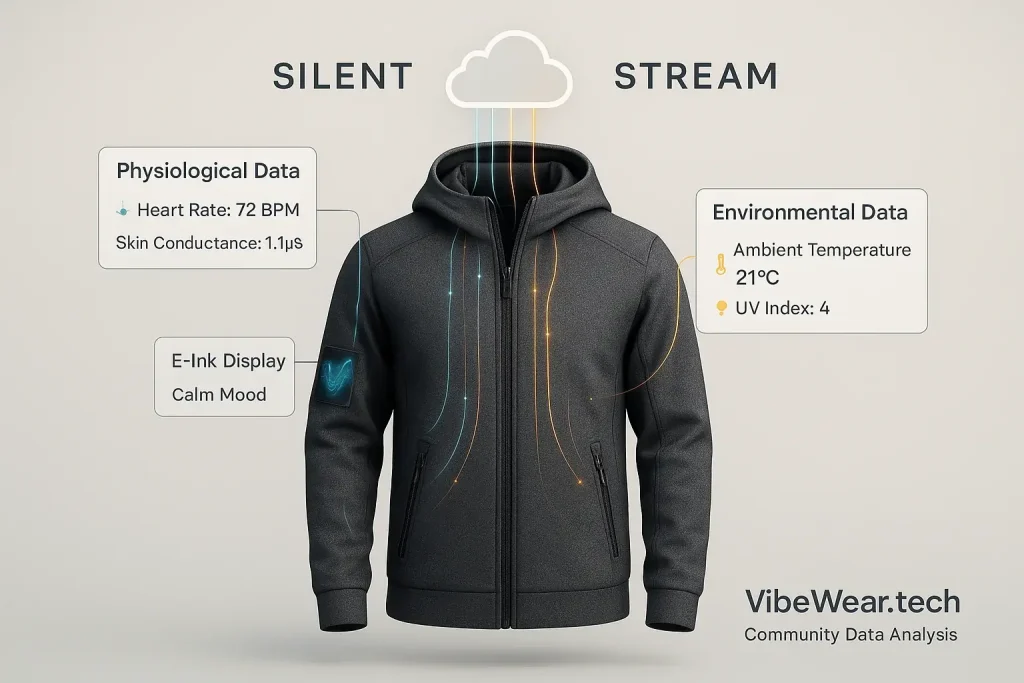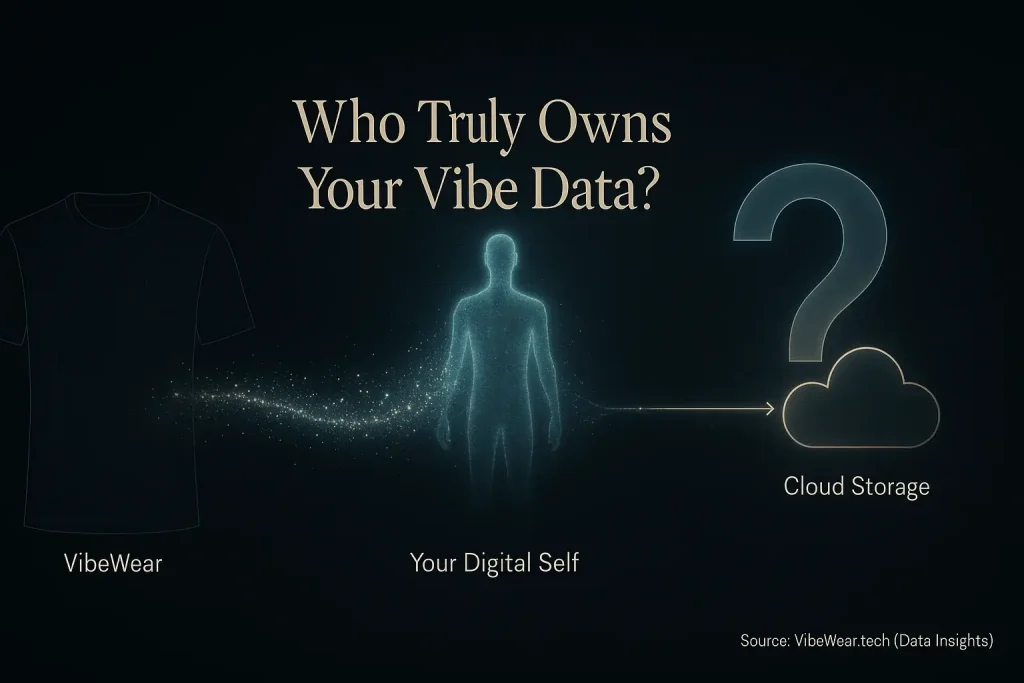Beyond Expression: What is 'Mood Hacking' in Adaptive Fashion?
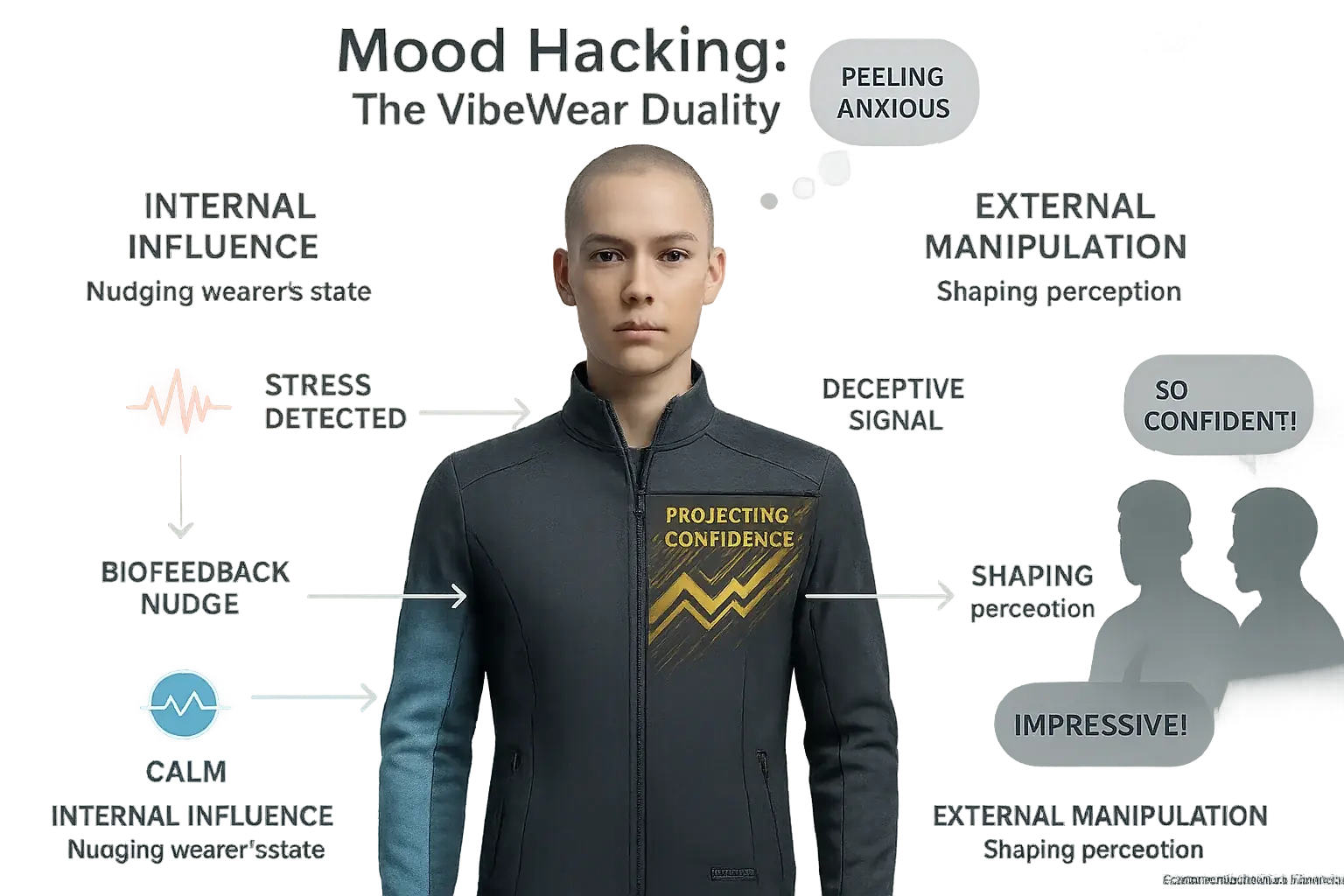
Your clothes reflecting your mood? A powerful idea. Every tool, however, has a flip side. We call this hidden potential 'mood hacking'. Adaptive garments might subtly influence the wearer's emotional state. They could also deceptively signal feelings to outside observers. This demands serious investigation.
How could this work? Subtle sensory shifts are the mechanism. Imagine VibeWear detects rising stress levels post-meeting. It then gently transitions its display to calming blue patterns. Is this genuinely helpful biofeedback? Or is it an unasked-for nudge towards a specific emotional state? This influence is not overt control. It is a quiet, almost imperceptible push.
External perception presents another angle. Garments could project false emotional signals to others. Think deliberate emotional misdirection. This capability opens pathways for social engineering. Your VibeWear might signal 'confidence' even when you feel anxious. This is mood hacking's deceptive twin. These ethical boundaries demand thorough exploration now.
The Subtle Nudge: How VibeWear Could Influence Your Own Emotions
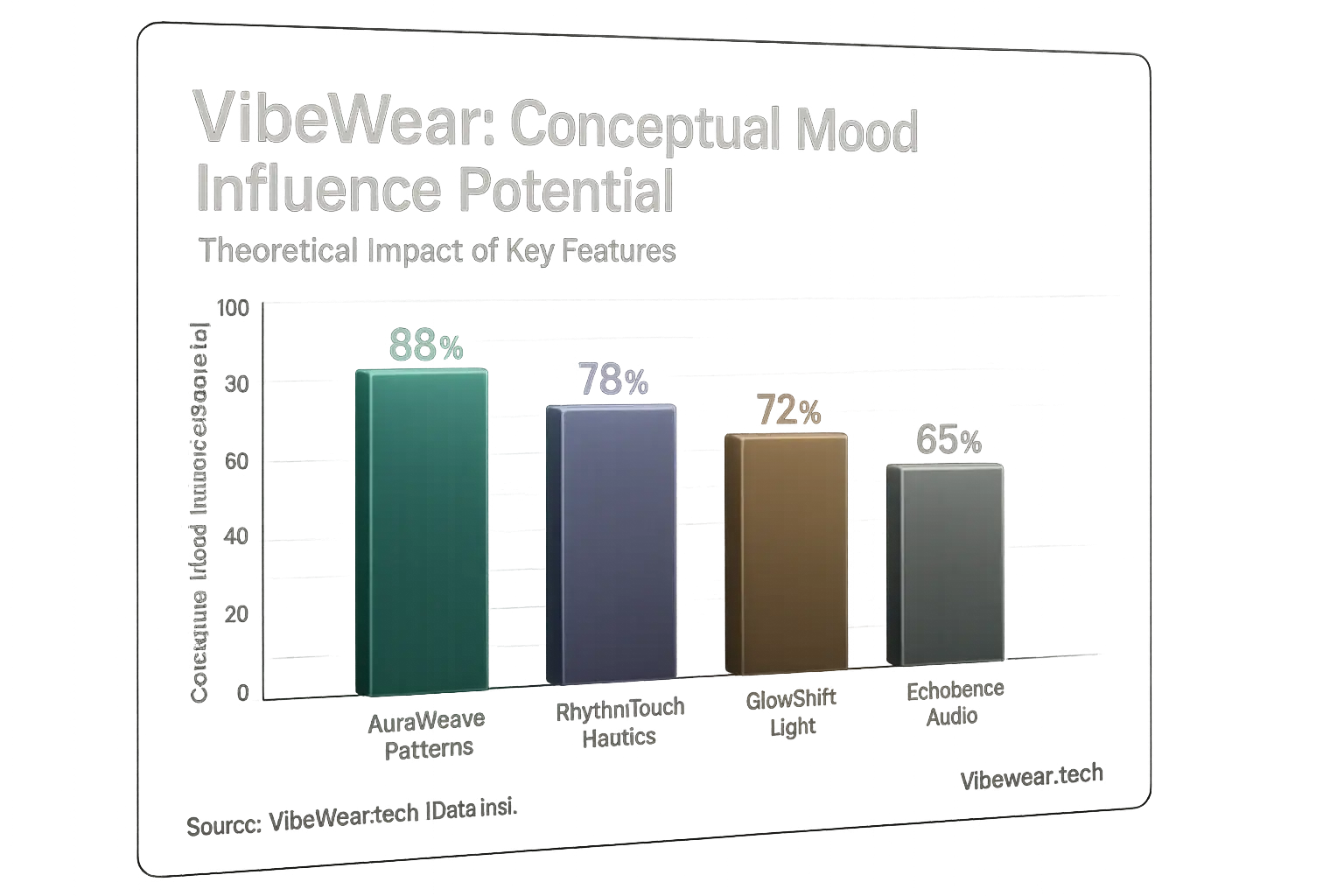
VibeWear might actively guide emotions. A significant shift. It moves beyond mere mood reflection. Biofeedback loops could power these nudges. Consider a user feeling overwhelmed; their VibeWear could subtly shift its e-ink display to a slow, undulating green pattern. A gentle, rhythmic pulse might even accompany this visual change, designed to calm.
This potential influence raises complex questions. Crucial ones. The line between helpful biofeedback and unwanted emotional shaping is thin. Who defines this 'desired' mood? The user, the designer, or perhaps a third party? VibeWear’s research highlights this as a critical ethical tightrope. A garment actively working to change your internal state warrants careful thought.
Potential benefits do exist. For someone with anxiety, VibeWear might offer gentle guidance towards a calmer state. This specific application could feel revolutionary. A true help. But what if a brand uses this subtle influence for other aims? Imagine clothing nudging you towards 'energetic' for more shopping, or pushing 'calm' in a stressful job to boost productivity, without full consent. The dual-use potential becomes stark.
User control must be absolute. Transparency regarding such features is non-negotiable. VibeWear's stance is clear: users must always hold the reins. Any mood-guiding technology requires explicit opt-ins and easy opt-outs. The power to influence internal states demands profound respect for personal autonomy.
The Social Mask: Deceptive Emotional Signaling via Adaptive Clothing
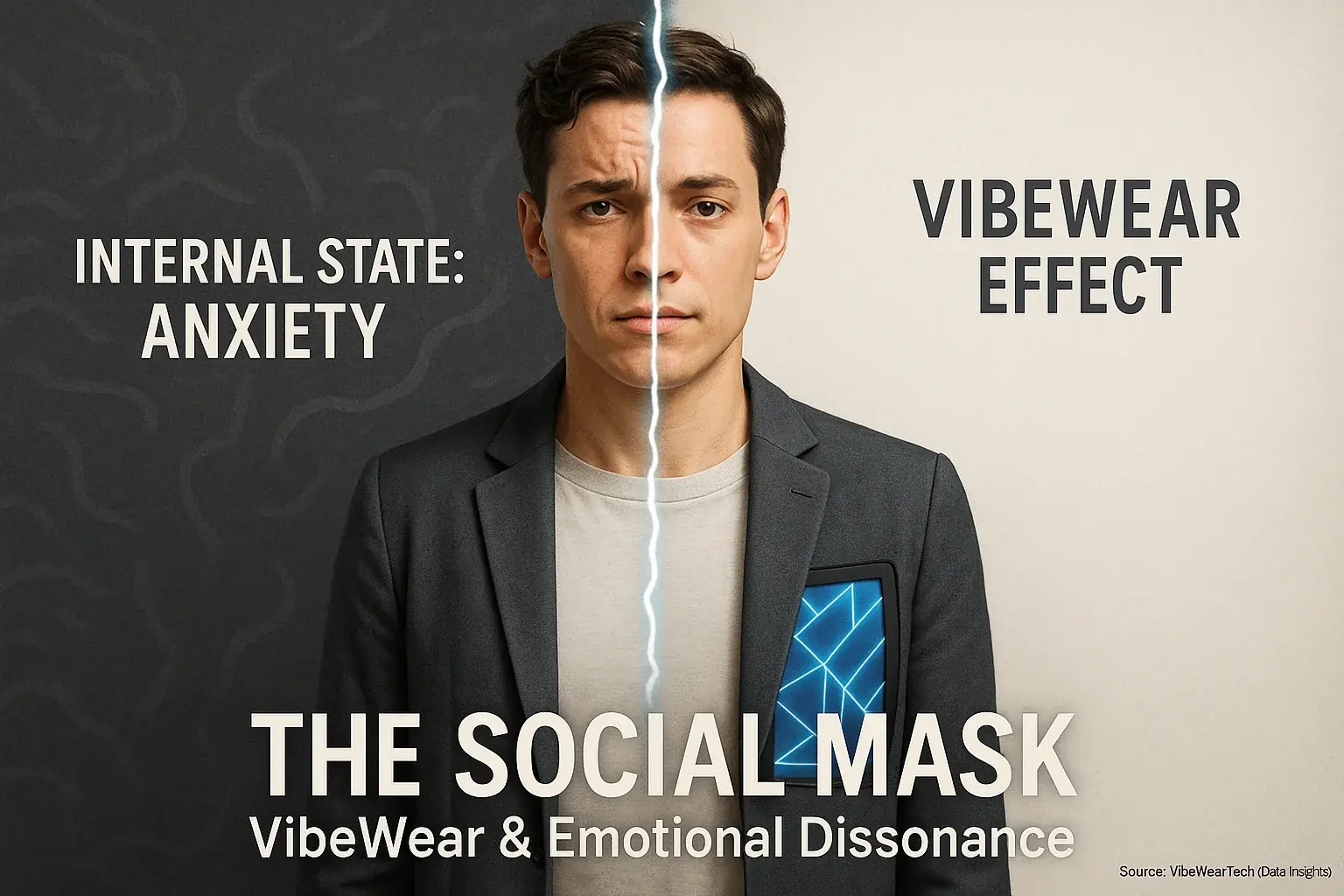
What if your clothing projected emotions you do not feel? VibeWear could enable this deceptive signaling, creating a sophisticated social mask. A person might then deliberately project false confidence during critical negotiations. Another could feign rapt attention throughout a tedious presentation. This capability directly challenges authentic social interaction. It changes things.
Social engineering risks then become starkly apparent. Imagine a job interview. Your VibeWear projects 'calm, collected confidence'. Inside, you are a bundle of nerves. Or picture a first date where your attire signals 'instant, profound connection', regardless of your actual, perhaps hesitant, feelings. Such deception erodes trust. Authentic human interactions diminish when displayed emotions are curated, not felt.
Ethical dilemmas immediately surface concerning this false signaling. Who bears responsibility when VibeWear facilitates misleading emotional displays? The wearer consciously choosing the deception? The garment's original designer? The platform that supplied the dynamic digital patterns? A disturbing possibility emerges: a societal 'race to the bottom' where everyone feels pressured to employ emotional masking, further degrading genuine human connection.
VibeWear's investigation reveals a crucial need for establishing clear societal norms. User awareness about the potential for deceptive emotional signaling is paramount. Open discussion must address these capabilities proactively. This ensures technology serves authentic expression, not widespread manipulation. The future depends on it.
The Commercial Vibe: Marketing, Advertising & Persuasion Tactics
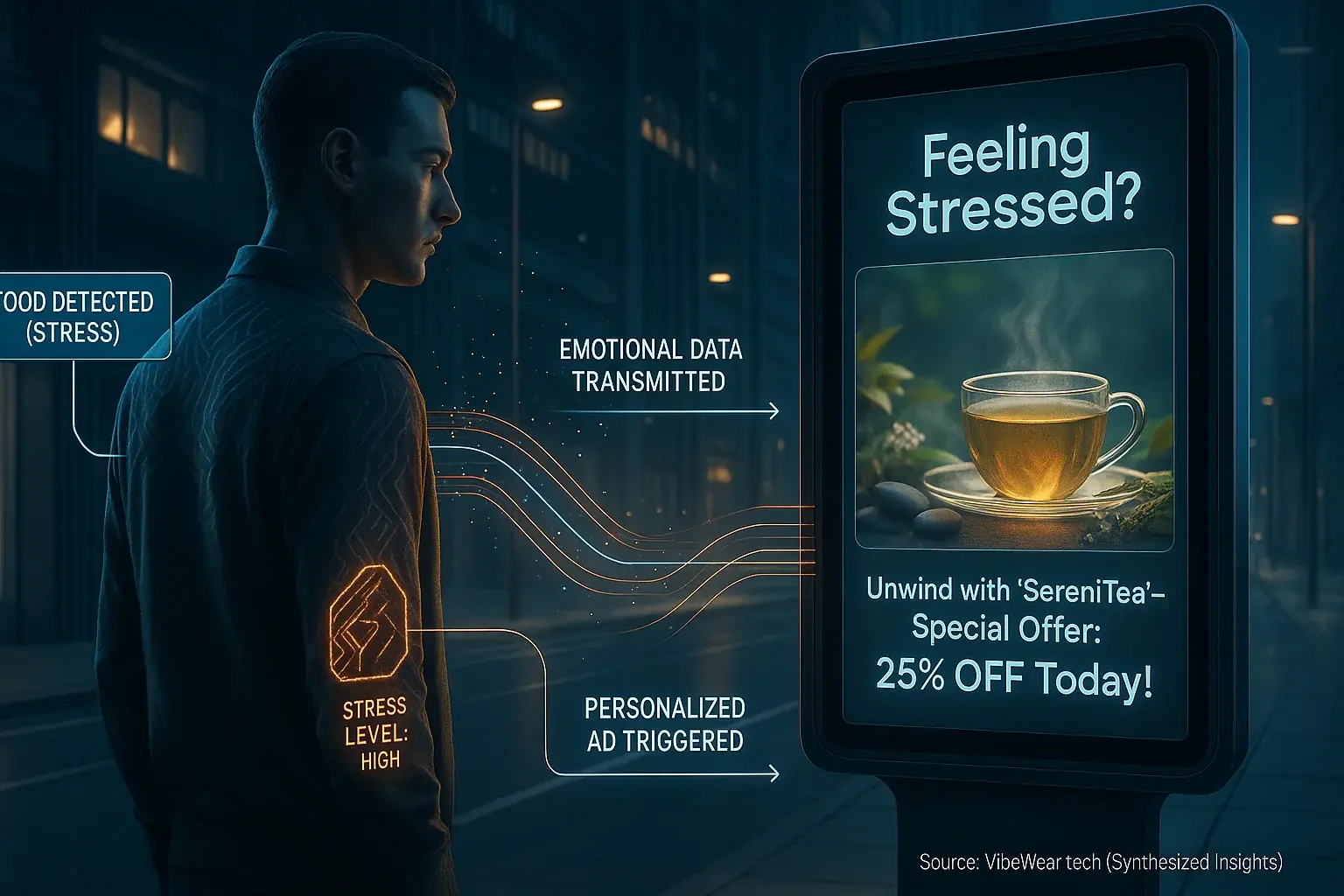
Marketing and advertising industries see VibeWear's potential. Imagine walking past a store. Your VibeWear subtly shifts, displaying a pattern suggesting 'excitement'. A nearby beacon, placed by the store, triggers this visual change. The goal? To make you feel more receptive to shopping. Companies could leverage this for intensely personalized, emotionally targeted advertising campaigns, influencing consumer behavior at a subconscious level.
This capability introduces troubling data exploitation possibilities. If your clothing can 'read' your mood, what prevents advertisers from accessing that data? They could push products when you feel vulnerable. They might optimize prices based on your detected emotional state. Our synthesis of emerging trends indicates these are not far-fetched scenarios. Such emotional data exploitation raises significant privacy and consumer protection concerns, demanding proactive discussion now.
The ethical line blurs considerably. Is it ethical for a brand to subtly influence your mood to secure a sale? Or to use your intimate emotional data to craft hyper-persuasive advertisements you cannot consciously resist? VibeWear's ongoing research suggests current frameworks are unprepared. The potential for emotional manipulation necessitates strict regulation. Transparent data usage practices must become non-negotiable standards for any commercial application.
Consumers will face a significant challenge. Distinguishing genuine personal needs from technologically induced desires becomes harder. Mood-adaptive technology, in persuasive hands, could subtly reshape purchasing decisions. This technology might even erode the foundation of informed consent. Protecting consumer autonomy in this new landscape is paramount.
Drawing the Line: Establishing Ethical Boundaries for Mood-Adaptive Fashion

So, how do we prevent VibeWear from becoming a tool for manipulation instead of empowerment? Clear ethical boundaries are non-negotiable for responsible innovation. VibeWear champions these guiding principles. They ensure technology serves humanity. Always.
First, absolute user consent comes first. Users must control their emotional data completely. They need clear information: what data is collected? How is it used? How can they manage sharing or deletion? Second, transparency defines garment functionality. If a garment can influence mood, explicit disclosure becomes mandatory. Imagine a VibeWear app pop-up: 'This pattern can subtly enhance focus. Activate?' This simple choice puts power firmly with the user.
Designers and developers bear a heavy ethical burden. This is an unspoken truth. They must prioritize user wellbeing above all else. They must actively design against manipulative features. Not around them. Inclusivity and accessibility also demand their focus. The critical question changes: 'Should we build this?' not just 'Can we build this?'
VibeWear's future acceptance hinges on this ethical foundation. Trust is the cornerstone. We believe mood-adaptive clothing must empower genuine self-expression. It should never become a tool for unseen control. This path builds lasting legitimacy.

